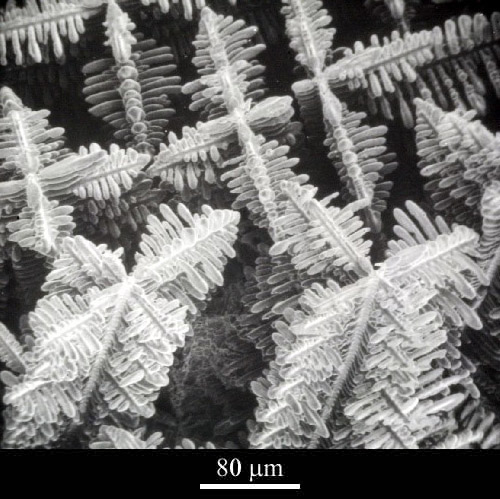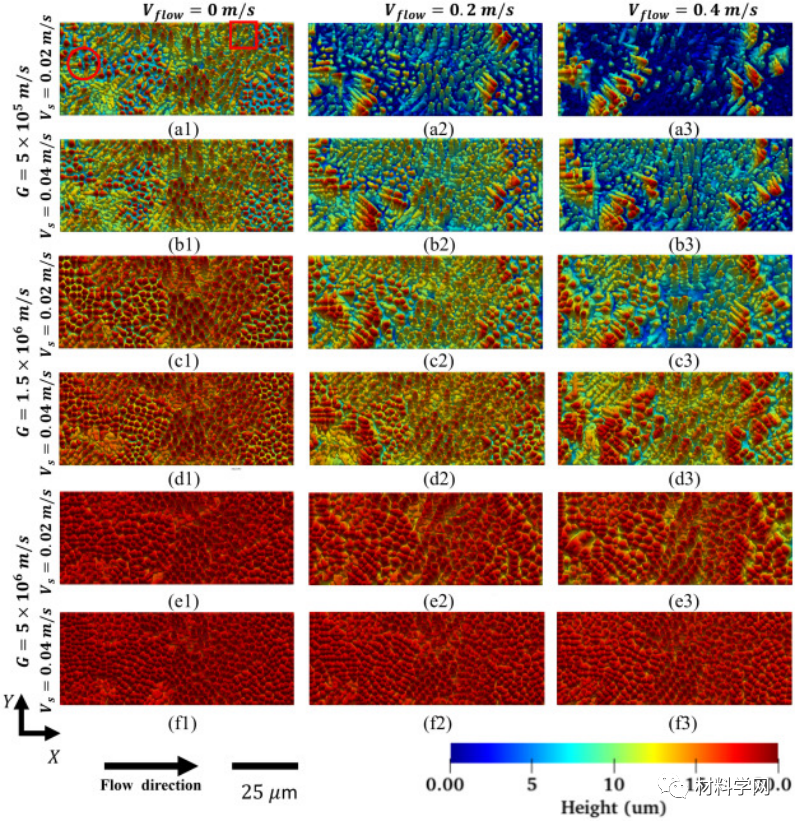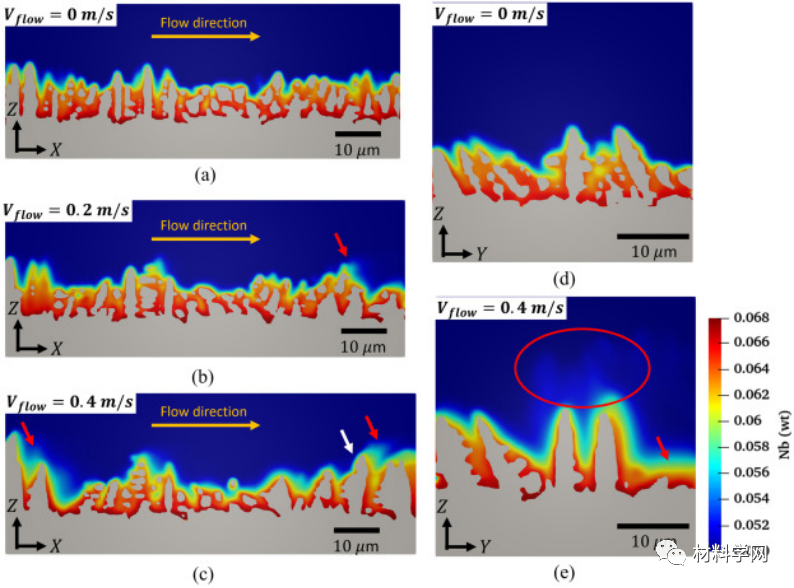Researchers from Tsinghua University and the National University of Singapore are investigating the effects of fluid flow on the mechanical properties of metal 3D printed parts.
When it comes to metal additive manufacturing technologies like laser powder bed fusion, carefully controlling the formation of new grains and dendrites in printed parts is crucial for tuning the final grain structure. This is important because grain structure and grain size have a significant effect on almost all mechanical properties, including hardness, yield strength, tensile strength, fatigue strength, and impact strength.
There are a whole host of factors and parameters that can influence the formation of new grains and dendrites in 3D printing, but temperature gradient and solidification velocity are already thought to be prime determinants. According to the researchers however, the effects of fluid flow in the melt pool of a 3D printed part haven’t yet been investigated.

Simulating dendritic growth via CFD
Dendrites in the world of metallurgy are characteristic tree-like structures of crystals that grow and propagate as molten metal solidifies. Much like grain size, dendritic growth can have profound effects on the mechanical properties of metal parts.
To study the effects of fluid flow, the research team used a computational fluid dynamics (CFD) model to simulate the growth of dendrites in flowing liquid melt pools. The model covered flow velocities of 0, 0.2, and 0.4 m/s at a variety of temperature gradients and solidification velocities for comprehensiveness. In order to connect fluid flow to dendrite growth, the team two-way coupled the CFD model and the multi-grid dendritic development model.
The team also leveraged experimental methods to supplement the models, performing single-track tests on samples of Inconel 718 using both laser and electron beams.
The subsequent numerical modeling process involved simulating dendrite growth in the various flow conditions with different build orientations and solidification conditions. Additionally, the flow field and temperature data from the physical experiments were used to conduct melt pool-sized dendrite growth simulations.

How did fluid flow affect dendrite growth?
Looking at the results, the higher the temperature gradient at the boundary of the melt pool, the longer the distance between the tallest dendrite tip and the zero-undercooling plane.
The results of the simulations indicate that fluid flow and solidification velocity both have a very significant impact on the formation of dendrites and new grains in metal 3D printing. The effects are similar to those found in traditional casting processes too.
Concluding the work, the authors of the study believe their findings can provide useful insights for nucleation theory based on temperature gradient and solidification velocity. This ultimately paves the way for finer grain structure (and mechanical property) control in metal 3D printing processes.
Further details of the study can be found in the paper titled ‘Impact of fluid flow on the dendrite growth and the formation of new grains in additive manufacturing’.

The breadth of research in the metal additive manufacturing sphere is both extensive and astounding. Just this month, researchers from the Tallinn University of Technology and the Estonian University of Life Sciences investigated the use of 3D printing technology to produce soft magnetic cores. While the printing of magnetic cores has been a major challenge thus far due to difficulties in preserving core efficiency, the team has now proposed a laser-based additive manufacturing workflow that they claim can yield superior magnetic properties to soft magnetic composites.
Elsewhere, Virginia Tech recently teamed up with MELD Manufacturing, a 3D printing technology developer based in Christiansburg, to advance the firm’s Additive Friction Stir Deposition technology. The University’s Yu Research Group has begun spearheading the study of the technology in an academic capacity for the first time. Virginia Tech’s research interests include process fundamentals such as temperature, material flow, and distortion, as well as dynamic phase and microstructure evolution.
Subscribe to the 3D Printing Industry newsletter for the latest news in additive manufacturing. You can also stay connected by following us on Twitter, liking us on Facebook, and tuning into the 3D Printing Industry YouTube Channel.
Looking for a career in additive manufacturing? Visit 3D Printing Jobs for a selection of roles in the industry.
Featured image shows the CFD-simulated dendrite structures. Image via Tsinghua University.



